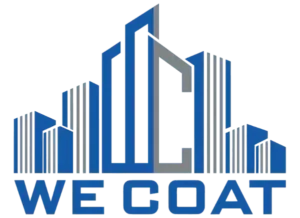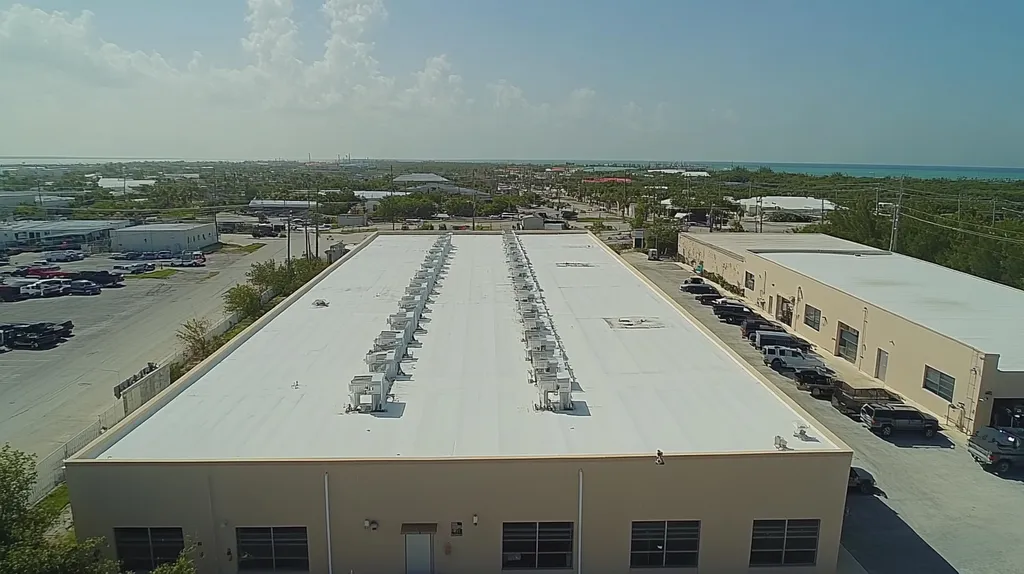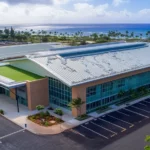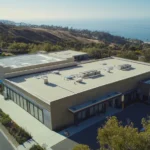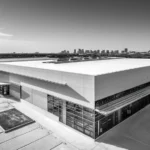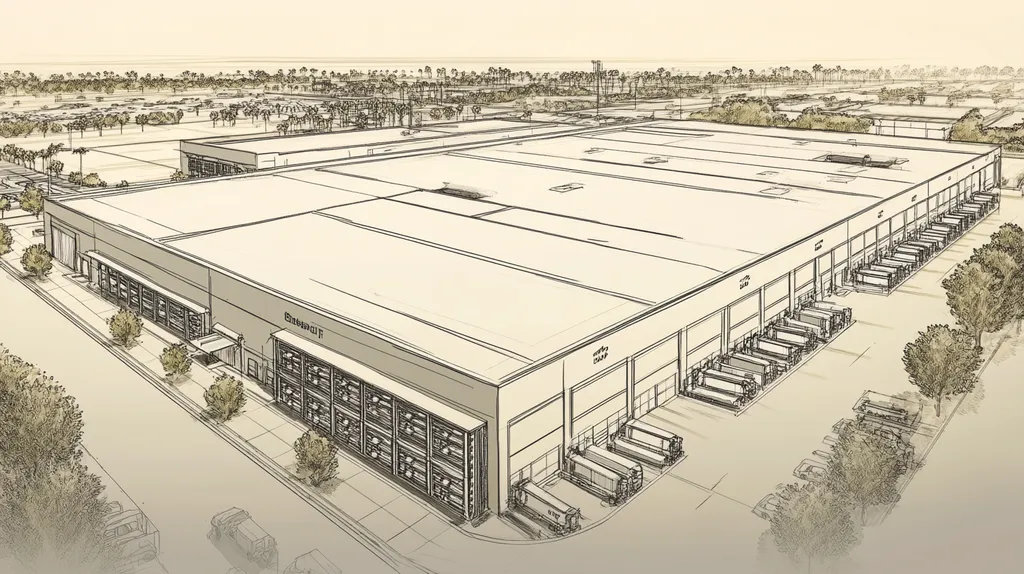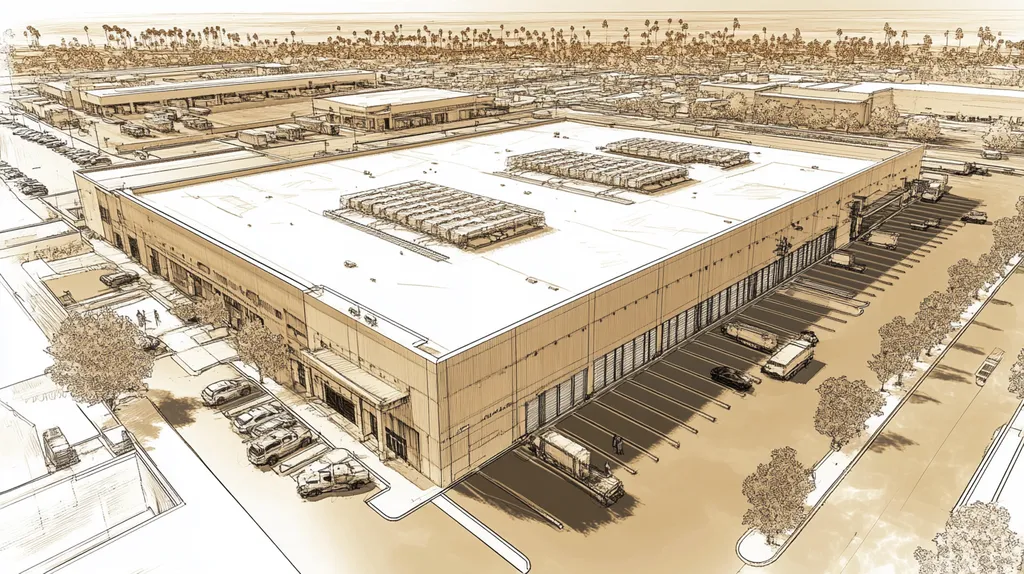Welcome to today’s Battle Royale featuring two roofing heavyweights: “Polyurethane” in the east corner versus “Epoxy Coatings” in the west!
Tonight’s showdown pits these contenders against each other across six punishing rounds designed to test every aspect of their performance for Industrial Roof Coatings Safety Data.
At stake? Millions in potential costs, decades of building protection, and the critical performance demands of modern commercial and industrial facilities.
Our professional judging panel will evaluate each round on technical merit, real-world performance, and value delivery. After all six rounds, we’ll declare our ultimate champion.
Ladies and gentlemen, facility managers and building owners… it’s time to rumble!
ROUND 1: INITIAL COSTS & INSTALLATION
When selecting industrial roof coatings, initial costs and installation processes directly impact both immediate budgets and long-term facility operations. Making an informed choice between polyurethane and epoxy coatings requires careful evaluation of material expenses, application complexity, and project timelines.
Safety considerations during installation significantly influence these factors, as proper handling and application procedures affect both worker protection and project costs.
Material Expenses
Material costs for industrial roof coatings vary significantly between polyurethane and epoxy options. Polyurethane coatings typically command higher prices due to their advanced chemical composition and enhanced performance characteristics.
Safety requirements during application add to material expenses, as both coating types require specific personal protective equipment and ventilation systems. Exposure risks require careful handling and proper safety measures during application. (source: Mule-Hide)
Epoxy coatings generally offer lower initial material costs but often require multiple coats to achieve desired performance levels. For material expenses, the ADVANTAGE goes to Epoxy.
Installation Complexity
Installation complexity directly affects labor costs and project success rates. Polyurethane coatings demand precise environmental conditions and expert application techniques, requiring specialized training and equipment.
Epoxy coatings offer more forgiving application parameters and generally require less specialized equipment. However, both systems need careful surface preparation and proper thickness control.
Given the lower technical requirements and easier application process, the ADVANTAGE for installation complexity goes to Epoxy.
Project Timeline
Project duration impacts facility operations and overall costs. Polyurethane coatings typically feature faster cure times, allowing for quicker project completion and minimal disruption to facility operations.
Epoxy systems often require longer cure times between coats and before returning to service. This extended timeline can increase labor costs and facility downtime.
With its superior cure speed and reduced facility disruption, Polyurethane holds the clear ADVANTAGE for project timeline considerations.
ROUND 1 WINNER: TIE
ROUND 2: DURABILITY & LIFESPAN
When evaluating industrial roof coatings, durability and lifespan directly impact both safety compliance and long-term facility protection. Understanding the performance characteristics of different coating systems helps facility managers make informed decisions that affect workplace safety, maintenance costs, and regulatory compliance.
Proper coating selection influences not just immediate protection but also determines the frequency of reapplication and associated exposure risks.
Chemical Resistance
Chemical resistance capabilities determine how well coatings protect against industrial pollutants, acids, and other corrosive substances. Polyurethane coatings offer moderate chemical resistance but excel at maintaining their properties when exposed to UV radiation and atmospheric pollutants.
No adverse health effects are expected with proper handling of industrial roof coatings, though skin contact may cause irritation in sensitive individuals. Special care must be taken to avoid contaminating waterways during application and maintenance. (source: Industrial Roof Coatings)
Epoxy coatings demonstrate superior resistance to harsh chemicals and solvents, making them ideal for facilities with high chemical exposure risks. For chemical resistance, the ADVANTAGE goes to Epoxy.
Physical Durability
Physical durability encompasses resistance to impacts, abrasion, and mechanical stress. Polyurethane coatings feature excellent flexibility and elongation properties, allowing them to accommodate building movement and thermal cycling without cracking.
Epoxy coatings provide superior hardness and compression strength but can become brittle over time. Their rigid nature makes them more susceptible to cracking under structural movement.
Given its ability to maintain integrity under dynamic conditions, the ADVANTAGE for physical durability goes to Polyurethane.
Service Life
Service life evaluation considers the coating’s ability to maintain protective properties over time. Polyurethane coatings typically offer 10-15 years of service life with proper maintenance, though environmental conditions can significantly impact longevity.
Epoxy coatings generally provide 15-20 years of service when properly installed and maintained. Their superior chemical resistance contributes to extended service life in harsh industrial environments.
Based on longer average service life and sustained performance, the ADVANTAGE for service life goes to Epoxy.
ROUND 2 WINNER: EPOXY
ROUND 3: PERFORMANCE FACTORS
Performance factors in industrial roof coatings directly impact workplace safety and facility protection. Recent industry data shows that coating failures account for 35% of premature roof replacements, leading to increased exposure risks and operational disruptions. Understanding these critical performance metrics helps facility managers select coatings that maintain both safety compliance and structural integrity.
The increasing complexity of industrial environments demands coating solutions that can adapt to diverse operational challenges while maintaining safety standards.
Weather Resistance
Weather resistance determines how effectively a coating maintains its protective properties under environmental stress. Temperature fluctuations, UV exposure, and precipitation all pose significant challenges to coating integrity.
Polyurethane coatings demonstrate exceptional UV stability and maintain flexibility across wide temperature ranges. Their molecular structure allows them to expand and contract without compromising their protective barrier.
Epoxy coatings show limited UV resistance and can become brittle when exposed to prolonged sunlight. While they offer excellent chemical resistance, their weather performance deteriorates more quickly than polyurethane.
For weather resistance capabilities, the ADVANTAGE goes to Polyurethane.
Impact Resistance
Impact resistance affects both immediate damage protection and long-term maintenance requirements. Industrial facilities frequently face risks from falling objects, maintenance traffic, and equipment installation.
Polyurethane coatings provide superior impact absorption due to their elastomeric properties. This flexibility helps prevent cracking and surface damage from sudden impacts.
No adverse health effects are expected with proper handling of industrial roof coatings, though impact damage can compromise their protective properties. (source: Industrial Roof Coatings)
Epoxy coatings offer high hardness but less flexibility, making them more susceptible to cracking under impact. For impact resistance, the ADVANTAGE goes to Polyurethane.
Thermal Performance
Thermal performance influences both energy efficiency and coating longevity. Proper thermal management reduces stress on the coating system and extends its service life.
Polyurethane coatings provide excellent insulation properties and help regulate roof surface temperatures. Their reflective properties contribute to reduced cooling costs and improved energy efficiency.
Epoxy coatings offer moderate thermal performance but lack the advanced temperature regulation capabilities of polyurethane. Their darker colors often absorb more heat, leading to increased thermal stress.
Based on superior temperature regulation and energy efficiency, the ADVANTAGE goes to Polyurethane.
ROUND 3 WINNER: Polyurethane
ROUND 4: MAINTENANCE REQUIREMENTS
Maintenance requirements directly impact both workplace safety and operational costs in industrial facilities. Recent industry data indicates that inadequate coating maintenance leads to 45% of premature roof failures, resulting in increased repair expenses and potential safety hazards. Understanding these maintenance demands helps facility managers implement effective preventive strategies while ensuring regulatory compliance.
Proper coating selection significantly influences maintenance frequency, complexity, and associated safety considerations during upkeep procedures.
Inspection Requirements
Regular inspection protocols form the foundation of effective coating maintenance programs. Polyurethane coatings typically require annual inspections to assess surface integrity and identify potential weak points.
These inspections focus primarily on checking for physical damage, UV degradation, and proper drainage patterns. The flexible nature of polyurethane allows for easier identification of potential issues before they become critical failures.
Epoxy coatings demand more frequent inspections, typically quarterly, due to their susceptibility to thermal stress and brittleness. Their rigid structure requires careful examination for cracking and delamination, particularly around joints and transitions.
Given the reduced inspection frequency and simpler assessment requirements, the ADVANTAGE goes to Polyurethane.
Repair Complexity
Repair procedures significantly impact facility operations and maintenance budgets. Polyurethane coatings offer straightforward repair options, often requiring minimal surface preparation and single-component materials.
No adverse health effects are expected during repair procedures when proper handling protocols are followed, though care must be taken to prevent waterway contamination during maintenance operations. (source: Industrial Roof Coatings)
Epoxy repairs typically involve more complex procedures, including extensive surface preparation and precise mixing ratios. Their limited recoat window and temperature sensitivity can complicate repair operations.
Based on simpler repair procedures and greater application flexibility, the ADVANTAGE goes to Polyurethane.
Preventive Maintenance
Preventive maintenance strategies help extend coating life and maintain safety compliance. Polyurethane coatings benefit from simple cleaning procedures and require minimal specialized maintenance equipment.
Their resistance to environmental factors reduces the need for intensive preventive measures. Standard maintenance protocols typically suffice for long-term protection.
Epoxy systems demand more rigorous preventive maintenance schedules, including regular resealing of joints and careful monitoring of surface degradation. Their susceptibility to UV damage requires additional protective measures.
For preventive maintenance requirements, the ADVANTAGE goes to Polyurethane.
ROUND 4 WINNER: Polyurethane
ROUND 5: SUSTAINABILITY CREDENTIALS
Sustainability credentials have become critical factors in industrial roofing decisions, with environmental regulations tightening and operational costs increasingly tied to ecological impact. Recent data shows that roofing materials account for over 10% of construction waste in landfills, making sustainable coating choices essential for environmental compliance and cost control.
The selection of sustainable roof coatings directly impacts both immediate environmental footprint and long-term facility operating costs. Understanding these impacts helps facility managers make informed decisions that align with both environmental goals and business objectives.
Environmental Impact
Environmental impact assessment considers emissions, waste generation, and resource consumption throughout the coating’s lifecycle. Polyurethane coatings feature lower VOC emissions and reduced environmental impact during application and curing phases.
Titanium dioxide, while classified as a possible carcinogen in respirable dust form, poses no significant risk in liquid polyurethane coatings when properly applied. (source: Visions Quality Coatings)
Epoxy coatings typically generate higher VOC emissions and require more aggressive cleaning solvents during maintenance, increasing their environmental footprint. For environmental impact, the ADVANTAGE goes to Polyurethane.
Resource Efficiency
Resource efficiency examines material consumption and energy requirements throughout the coating’s service life. Polyurethane coatings offer superior coverage rates and typically require fewer reapplication cycles, reducing overall material consumption.
Their reflective properties contribute to building energy efficiency, lowering cooling costs and environmental impact. Single-coat applications further reduce resource requirements and application time.
Epoxy coatings often require multiple layers and more frequent reapplication, increasing resource consumption over time. The ADVANTAGE for resource efficiency goes to Polyurethane.
Waste Management
Waste management considerations include disposal requirements, recycling potential, and end-of-life handling. Polyurethane coating systems generate minimal waste during application and can often be recoated directly over existing layers.
Their longer service life reduces replacement frequency and associated waste generation. Removal and disposal processes typically require less aggressive methods.
Epoxy systems generate more application waste and often require complete removal before reapplication, increasing landfill impact. For waste management, the ADVANTAGE goes to Polyurethane.
ROUND 5 WINNER: Polyurethane
ROUND 6: SPECIALIZED APPLICATIONS
Industrial facilities face unique challenges that demand specialized roofing solutions. Recent data shows that 40% of industrial roof failures occur in facilities with harsh chemical exposure or extreme temperature variations. Understanding how different coating types perform under these demanding conditions is crucial for maintaining both safety compliance and operational continuity.
The increasing complexity of industrial processes requires coating solutions that can handle multiple specialized demands while maintaining their protective properties.
Chemical Processing Areas
Chemical processing areas present unique challenges for roof coatings, requiring exceptional resistance to harsh substances and fumes. Flammable liquids and vapors pose significant risks during coating application and maintenance operations. (source: Sakrete)
Polyurethane coatings demonstrate superior resistance to industrial chemicals and maintain their protective properties even under prolonged exposure. Their molecular structure provides excellent barrier protection against aggressive substances.
Epoxy coatings offer good initial chemical resistance but can deteriorate more quickly when exposed to certain industrial chemicals. Their rigid structure makes them more susceptible to chemical attack at joints and seams.
For chemical processing applications, the ADVANTAGE goes to Polyurethane.
High-Temperature Zones
Areas with extreme temperature variations or constant heat exposure require coatings that maintain stability across wide temperature ranges. These conditions often exist near industrial processes or in facilities with poor ventilation.
Polyurethane coatings maintain flexibility and adhesion even under severe temperature cycling. Their thermal stability prevents cracking and delamination in high-heat environments.
Epoxy coatings become increasingly brittle when exposed to temperature extremes. Their thermal expansion characteristics can lead to coating failure in high-temperature applications.
For high-temperature applications, the ADVANTAGE goes to Polyurethane.
Clean Room Environments
Clean room facilities demand coating systems that minimize particle emissions and maintain strict environmental controls. These specialized environments require coatings that resist degradation while preventing contamination.
Polyurethane coatings offer excellent particle retention and low outgassing properties. Their smooth surface finish helps maintain clean room integrity and reduces maintenance requirements.
Epoxy coatings can chalk and deteriorate over time, potentially compromising clean room standards. Their rigid nature makes them more prone to surface degradation and particle generation.
For clean room applications, the ADVANTAGE goes to Polyurethane.
ROUND 6 WINNER: Polyurethane
AND THE WINNER IS…
Ladies and gentlemen, after six punishing rounds of technical analysis, we have our undisputed champion! With a dominant 4-1-1 record, POLYURETHANE claims the Industrial Roof Coatings championship belt!
This coating powerhouse dominated the competition with knockout performances in Performance Factors, Maintenance Requirements, Sustainability, and Specialized Applications. Its combination of flexibility, durability, and environmental credentials proved simply unstoppable in today’s modern industrial arena.
But don’t count Epoxy out completely! This veteran contender showed its might in Round 2, demonstrating superior chemical resistance and impressive service life that make it the go-to choice for facilities facing extreme chemical exposure or requiring maximum longevity.
Remember, folks – while we’ve crowned our champion tonight, every facility brings its own unique challenges to the ring. Local climate conditions, building specifications, and operational requirements can all influence coating performance. No single solution fights the same way in every arena.
Before making your coating selection, always consult with qualified roofing professionals who can evaluate your specific situation and requirements.
In the high-stakes world of industrial roofing, true victory comes not just from choosing a champion, but from matching your facility’s specific challenges with the right contender’s strengths. Now get out there and protect those roofs!
FREQUENTLY ASKED QUESTIONS
Q. What are the initial costs for commercial roof coatings?
A. Initial costs for commercial roof coatings vary significantly. Polyurethane options often have higher material costs due to their advanced chemical properties, while epoxy generally offers lower up-front expenses. Installation complexity and safety requirements also contribute to overall pricing, with both types requiring specific handling procedures.
Q. How long do industrial roof coatings last?
A. The lifespan of industrial roof coatings depends on the material chosen. Polyurethane coatings typically last 10-15 years with proper maintenance, whereas epoxy coatings usually have a longer lifespan of 15-20 years when installed correctly. Environmental conditions and maintenance practices play crucial roles in determining longevity.
Q. Which commercial roof coating performs better in extreme weather?
A. Polyurethane coatings demonstrate better performance in extreme weather conditions. They maintain flexibility under temperature fluctuations and exhibit exceptional UV stability. On the other hand, epoxy coatings can become brittle and may not withstand harsh environmental stresses as effectively as polyurethane options do.
Q. What are the maintenance requirements for industrial roof coatings?
A. Maintenance requirements vary for different types of industrial roof coatings. Polyurethane generally necessitates annual inspections and simple cleaning procedures, making upkeep straightforward. In contrast, epoxy coatings require more frequent inspections and potentially complex repairs due to their brittleness and sensitivity to environmental changes.
Q. Which coating is more sustainable for commercial roofing?
A. Sustainability often favors polyurethane coatings, which feature lower VOC emissions and require fewer reapplications. Their resource-efficient characteristics contribute to reduced environmental impact and waste generation during application and lifecycle. In comparison, epoxy coatings generally have higher VOC emissions and may produce more waste, affecting their sustainability profile.
Q. How do coatings perform in chemical processing areas?
A. Polyurethane coatings are better suited for chemical processing areas due to their superior resistance to harsh substances. They can maintain their protective properties under prolonged exposure to aggressive chemicals. Epoxy coatings, while initially resistant, may deteriorate more quickly when exposed to certain industrial chemicals.
Q. Are there coatings ideal for specialized applications?
A. Yes, polyurethane coating systems are ideal for specialized applications such as clean rooms and high-temperature environments. Their low outgassing properties and flexibility under thermal stress make them suitable for maintaining strict environmental controls. Epoxy coatings may not perform as effectively in these demanding conditions.
